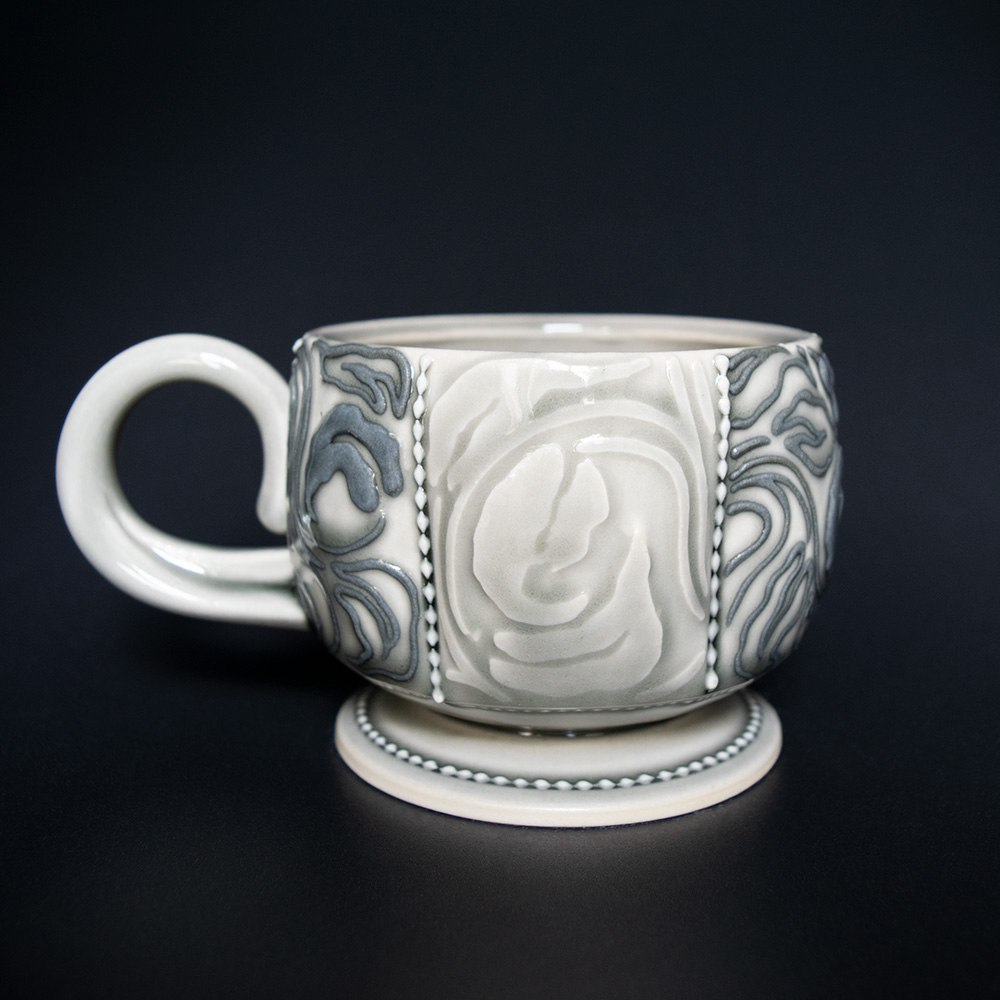We were lucky to catch up with Erica Bleu O’Connor recently and have shared our conversation below.
Alright, Erica Bleu thanks for taking the time to share your stories and insights with us today. Can you talk to us about a project that’s meant a lot to you?
The most meaningful project I’ve worked on was my senior thesis show in college, titled Growth in Vulnerability. The exhibition featured three life-sized clay figures mounted on a wall, each paired with a flameworked glass spider. In my work, I often explore how insect and arachnid behavior reflects human experiences, revealed at a smaller, more instinctive scale.
One of the spiders lay curled on its back, seemingly dead. But looks can be deceiving; it was actually in the process of molting. During this vulnerable stage, the spider sheds its exoskeleton, its outer protection, and remains exposed until a new layer hardens. Though risky, molting is necessary for growth.
The figure paired with this spider is caught in the act of undressing. She too is shedding layers, those we wear to protect ourselves or to appear acceptable to others. At home, undressing becomes a private act of authenticity, a moment where we sit with ourselves just as we are. Like the spider, we must face discomfort and vulnerability to evolve.
Seeing all three mirrored scenes displayed together was one of the proudest moments of my life. It allowed me to share my deepest vulnerabilities and connect with others who felt the same.

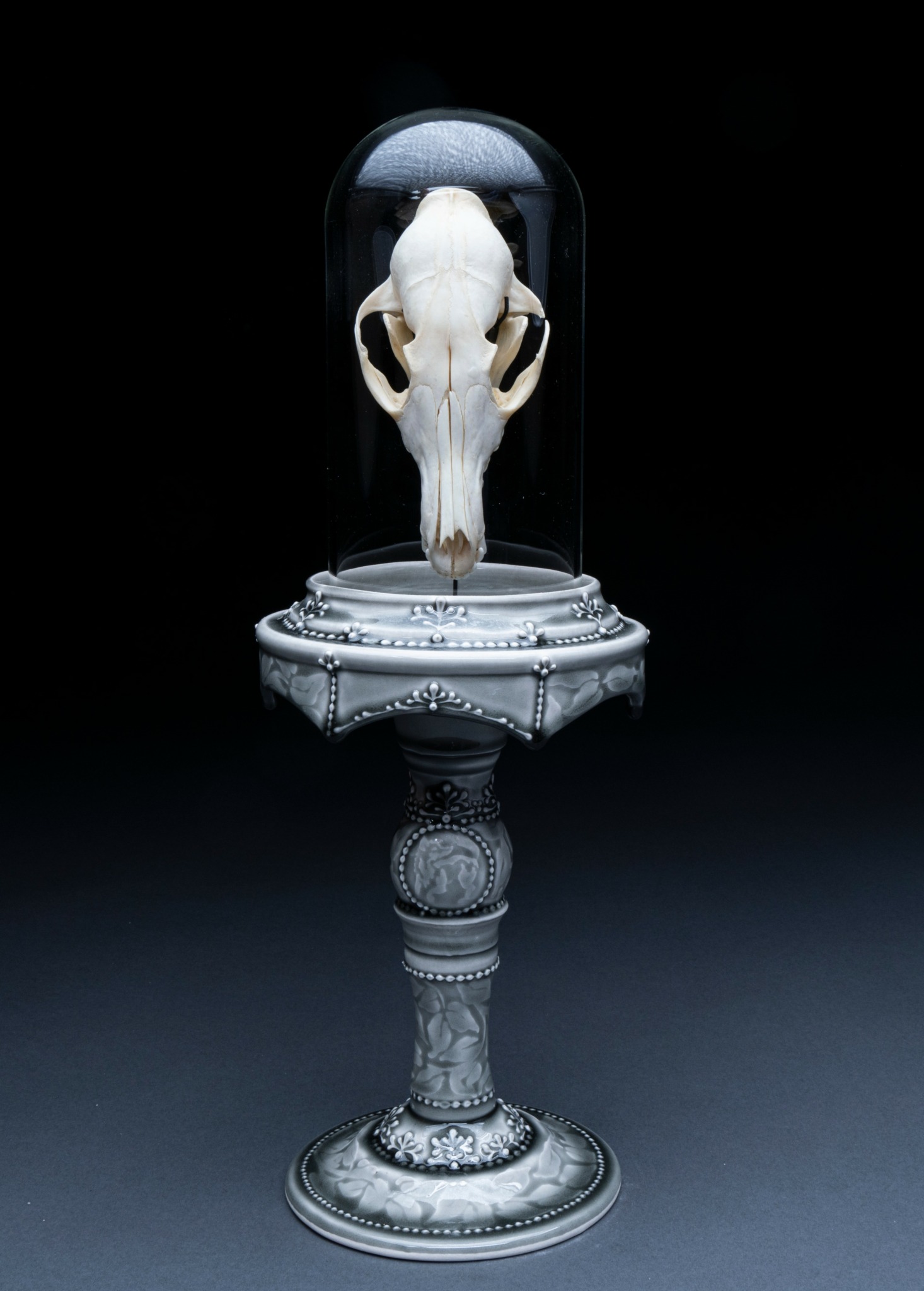
Erica Bleu, love having you share your insights with us. Before we ask you more questions, maybe you can take a moment to introduce yourself to our readers who might have missed our earlier conversations?
My name is Erica Bleu O’Connor, and I’m currently a resident artist at the Morean Center for Clay. I’ve always known I wanted to be an artist. I grew up in Indiana and began my college journey at Ball State University as a drawing major. Early on, I joined the clay guild and found myself spending more and more time in the pottery studio. Eventually, with encouragement from the ceramic graduate students who showed me that I could draw and paint on clay, I made the switch to ceramics.
After earning my degree in ceramics, I applied to residency programs across the country. I was fortunate to be accepted into several and ultimately decided to leave the Midwest and move to Florida to join the residency at the Morean Center for Clay. I now work full time creating both functional and sculptural pottery, and I also teach classes and workshops.
For me, throwing on the wheel is just the beginning. It’s like creating the canvas. I revisit each form and layer it with techniques like water etching, which creates subtle raised textures, and slip trailing, where I pipe liquid clay much like icing a cake. My finished work features ornate forms and intricate details, often incorporating spider and floral imagery in a palette of muted greys and weeping blues.
In addition to my studio practice, I take on commissions where I hand-paint cups for people who want to commemorate loved ones and pets in a personal and lasting way.
My latest project is a solo exhibition at the Morean Center for Clay titled Consume. The show features 104 ceramic shadow boxes containing insects I found and pinned here in Florida, with a focus on the Eastern Lubber Grasshopper. Though native, these grasshoppers have become overpopulated and consume everything around them. I use their behavior as a metaphor for human tendencies, particularly anxiety, which can quietly consume our mental and emotional well-being. Through this body of work, I aim to create a reflective environment where viewers can pause, take a breath, and consider their own internal landscapes.
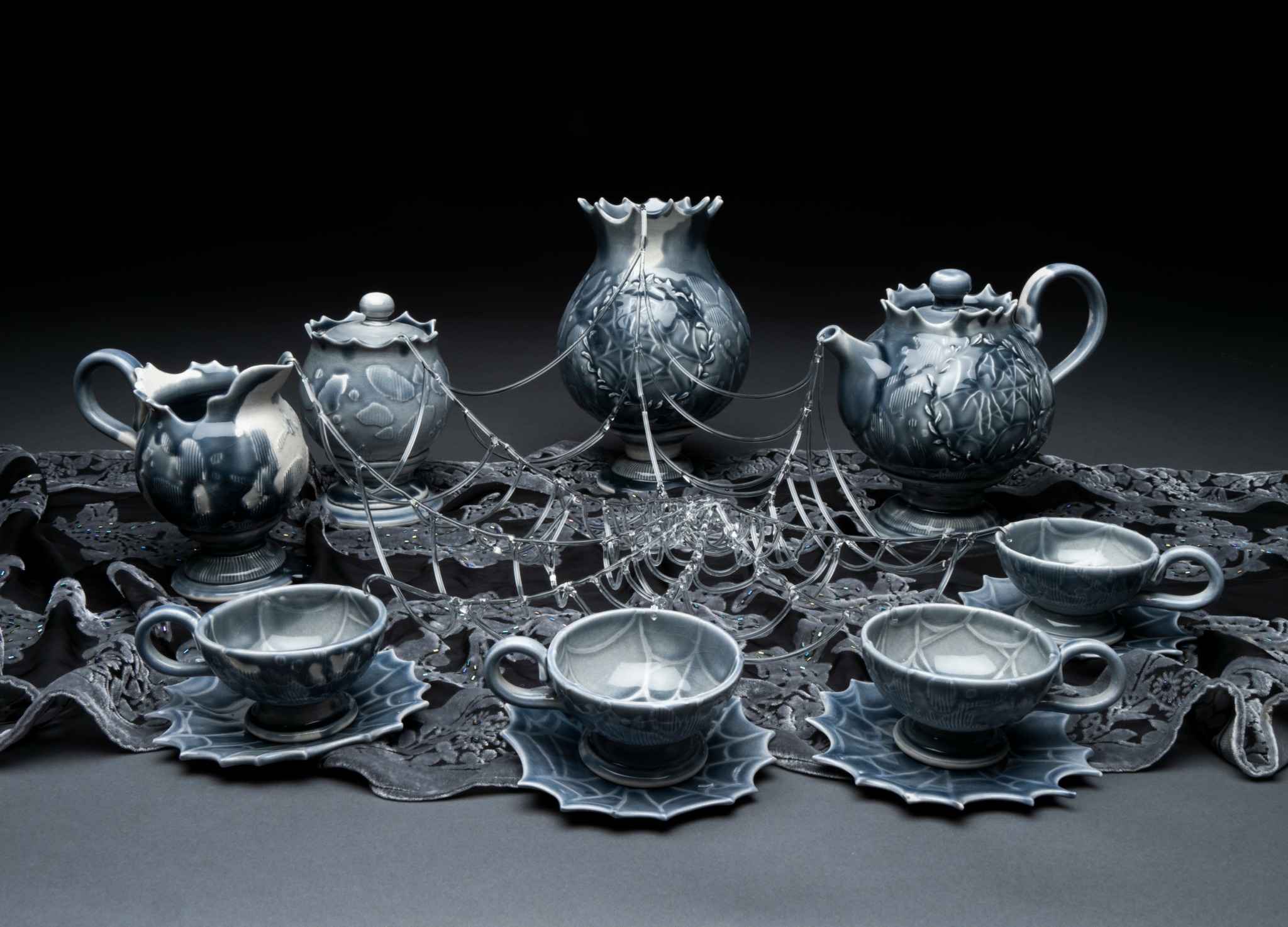
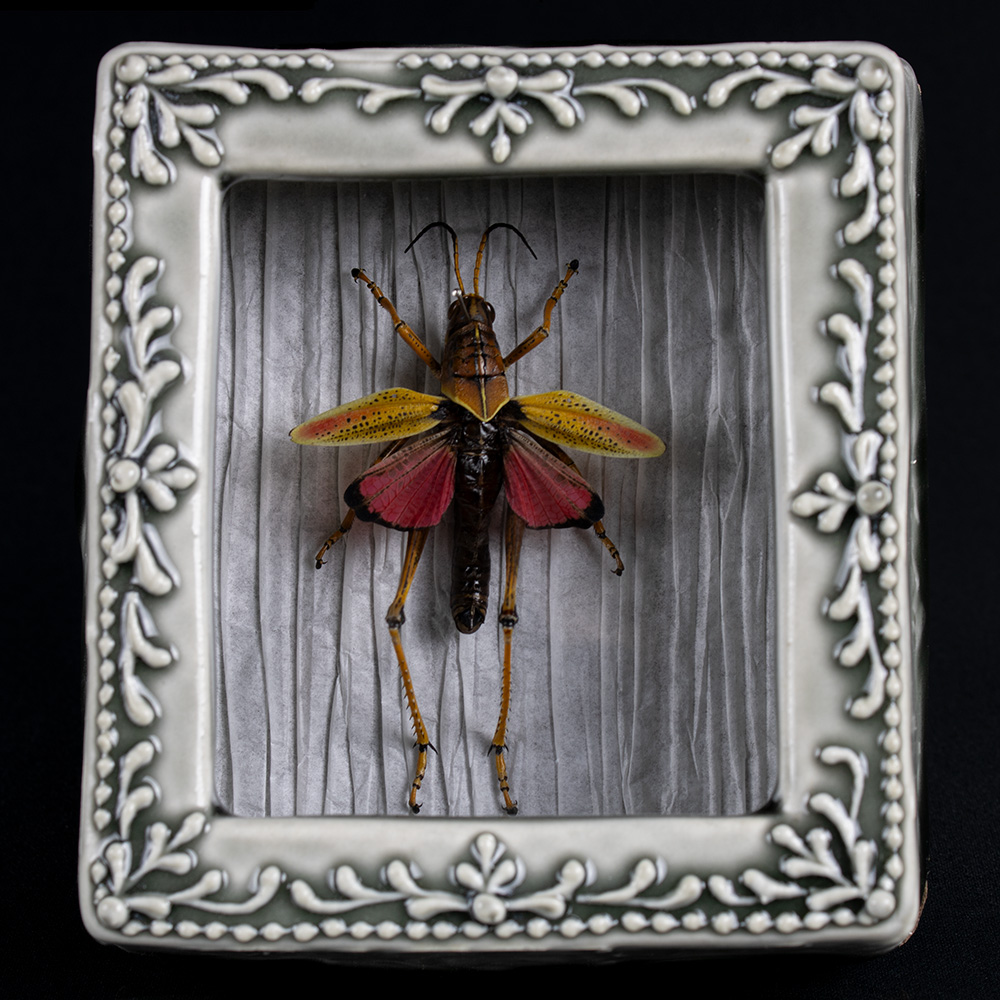
What do you find most rewarding about being a creative?
The most rewarding aspect of being an artist is the ability to connect with others. Much of my process is spent working alone in my studio, reflecting on concepts and developing the physical work itself. It’s a solitary practice, often quiet and introspective. So when I finally get to share a piece I’ve poured hours into, especially one that holds deep personal meaning, connecting with people who resonate with it makes everything worthwhile.
While compliments are always appreciated, what means the most is when someone tells me they relate to the emotion behind the work. One piece in particular took me about seven weeks to complete. It was a life-sized figure lying in distress, with a pair of arms reaching from behind to gently wrap around her, offering comfort. When I shared the finished piece online, it received far more attention than I anticipated. I was overwhelmed by the number of people who reached out, saying the work helped them process their own experiences.
Some viewers saw it as a reflection of grief and said it brought them peace while dealing with the loss of a loved one. Others interpreted the arms as their own, a symbol of self-love and learning to hold themselves together. The many different readings of that single piece deeply moved me. Creating work that helps me process something personal is powerful, but hearing that it has helped someone else is truly unmatched.
Another way I connect with others is through teaching. I lead classes in wheel throwing and figure sculpting, and I also teach workshops on surface decoration and insect pinning. Teaching is incredibly rewarding because I get to share my passion for clay and making. Clay is a humbling medium, but once students reach a breakthrough in understanding it, I feel immense joy. Working with clay has always been an outlet for me, and seeing it become one for others makes the work all the more meaningful.

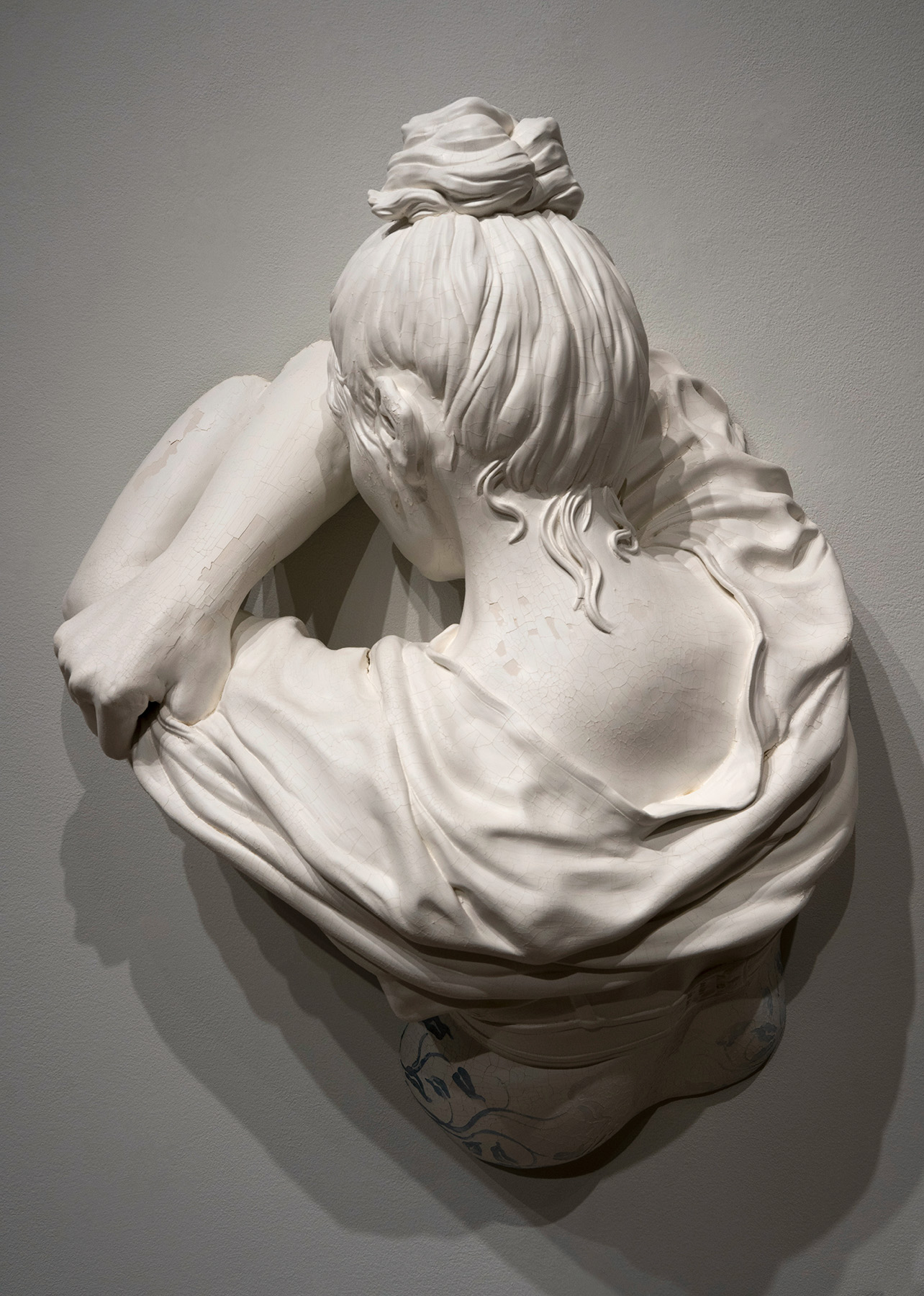
Looking back, are there any resources you wish you knew about earlier in your creative journey?
A resource I wish I had known about and taken advantage of earlier in college is the free therapy services offered to students. Studying art can be especially challenging, particularly as a young person trying to figure out who you are while juggling assignments, multiple jobs, and the pressure to make work that’s supposed to represent your identity. On top of that, it is discouraging to hear the common narrative that pursuing a career in art isn’t realistic.
It wasn’t until my final year that I began attending the free therapy sessions provided by my school. Although it took some time to find the right therapist, I was incredibly grateful for the support, and my only regret is not starting sooner. One of the most valuable things my therapist shared was that many art students find themselves in need of therapy, often because we are constantly analyzing and conceptualizing, which can lead to getting stuck in our own heads and falling into negative thinking patterns.
Though my time in therapy was brief, it helped me better understand both myself and my work. It gave me tools to reflect in a healthier way and added more depth to my creative process. If you are a student, or if you know someone in school who is struggling, regardless of their major, I strongly encourage looking into what mental health resources the school offers. Support is available, and seeking it out can make a real difference.
Contact Info:
- Website: https://www.ericableu.com
- Instagram: @erica_bleu_art
- Other: Tiktok: @erica.bleu
